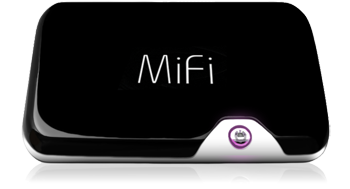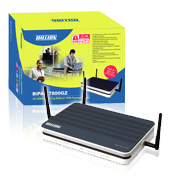4. Positioning is everything
It’s amazing how many people still expect their Mobile Broadband connection to be like a fixed land-line service or wireless (Wi-Fi) network and work from almost anywhere in their home. Unfortunately this is wrong and mobile operator reception quality deteriorates when you are inside a building, especially when you move to a level below ground where the signal might vanish altogether.
Naturally the best signal can always be had by simply going outside and staying stationary, ideally in an area of good reception; this is how Mobile Broadband is supposed to be used. Trying to use the service while on the move is often fraught with problems that occur as you pass between different parts of a network’s coverage and or in-between strong and weak signal areas. This can slow the service and cause occasional disconnections.
For those who prefer to remain indoors there are some simple solutions that might be able to help, we list these below:
a. Sit near the window, preferably an open one upstairs.
It doesn’t take a genius to work out that there are likely to be fewer obstructions for the signal if you situate yourself as near to being outdoors as possible. Windows are about as good as you can get and it often helps to be higher up rather than lower down in your building.
b. Use a MiFi Wireless Router (e.g. Novatel Wireless MiFi 2352).
 Not to be confused with a land-line broadband wireless router, MiFi is a term specifically used to describe a new generation of 3G Mobile Broadband equipped battery powered wireless routers. These small portable devices connect exclusively to your Mobile Broadband operator and then distribute the service to multiple devices (e.g. laptops) over a stronger and more reliable short-range Wi-Fi link.
Not to be confused with a land-line broadband wireless router, MiFi is a term specifically used to describe a new generation of 3G Mobile Broadband equipped battery powered wireless routers. These small portable devices connect exclusively to your Mobile Broadband operator and then distribute the service to multiple devices (e.g. laptops) over a stronger and more reliable short-range Wi-Fi link.
The obvious advantage is that you can place the MiFi router near an area of stronger reception (i.e. next to a window or even outside on a nice day) and simply connect via Wi-Fi indoors without losing the mobile signal quality.
MiFi router batteries will last around 5 hours depending on usage. The device itself can often be purchased as part of a Mobile Broadband package bundle (e.g. from Three(3), although you can also buy Novatel’s device separately for a hefty £220+).
c. Use a 3G equipped land-line broadband wireless router.
 A small number of fixed land-line broadband wireless routers now come with embedded support for a 3G connection (as the backup), which usually just requires you to slot in a Mobile Broadband sim-card. Then all you have to do is disconnect the land-line and allow the router to use your Mobile Broadband service for its primary connection.
A small number of fixed land-line broadband wireless routers now come with embedded support for a 3G connection (as the backup), which usually just requires you to slot in a Mobile Broadband sim-card. Then all you have to do is disconnect the land-line and allow the router to use your Mobile Broadband service for its primary connection.
The advantage here is similar to MiFi in that the signal is distributed to you via a stronger Wi-Fi connection while you have more flexibility to position your router near to a location of stronger 3G reception (i.e. the window). Full routers also give you stronger security features (e.g. firewalls), but they are obviously nowhere near as portable as a battery powered MiFi solution.
NOTE: A new technology known as Femtocel has also been developed that allows a land-line broadband connection to support the mobile network signal indoors when reception is poor. However this defeats the purpose of our article, which is to improve the actual mobile reception, and is also hard to buy at consumer level on the market (NetGear made a Femtocell equipped router DVG834GH but it has vanished from sale).

